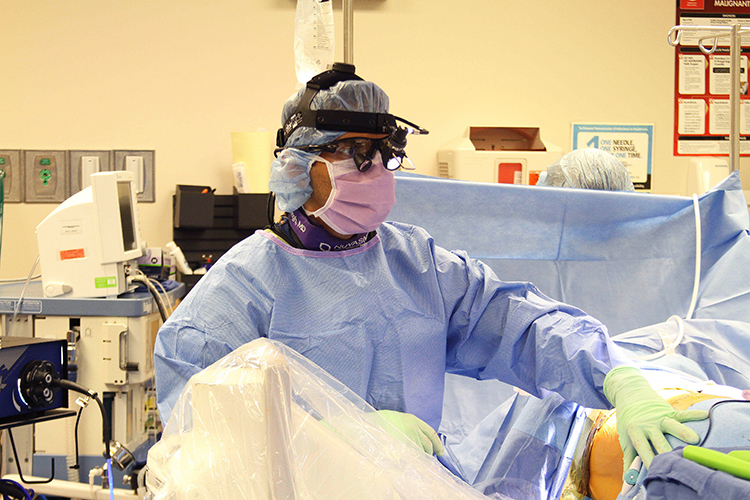September 7, 2017
Chronic spinal pain is a multifactorial issue that requires a concerted effort amongst members of the multidisciplinary team in order to maximize patient outcomes while minimizing the need for narcotic medications. Oftentimes patients with spinal disability require surgical intervention. The need for spine surgery creates a significant amount of anxiety on the patient regarding the need and potential for narcotic abuse following the procedure.

Although minimally invasive spinal techniques and surgical equipment have been developed allowing spine surgeons to treat patients without causing as much scarring—small incisions, no bleeding—patients still are routinely given narcotics following surgery to help them deal with the postoperative pain.
Until now.
Dr. Kern Singh, a spine surgeon at Midwest Orthopaedics at Rush and Professor at Rush University Medical Center, along with Dr. Asokumar Buvanendran of Rush University Medical Center, have developed a new postoperative spine anesthesia protocol that decreases and/or eliminated the need for post-surgical narcotics. The approach, referred to as multimodal analgesia (MMA), uses a combination of medications administered before, during and right after surgery to more effectively control pain. The two physicians have created a protocol that has removed any need for a morphine pump following spine surgery, with all patients going home with only oral medications following their procedure potentially the same day.

Minimally invasive spinal surgeries including laminectomies, diskectomies, neck/back fusions, and even artificial disk replacements are done with almost no narcotic medications in an outpatient Surgery Center. Patients are able to undergo a fusion or disk replacement to the neck or back and go home the same day. With increasing concerns regarding narcotic dependency, the new MMA protocols that Dr. Singh and Dr. Buvanendran have developed have changed the way spine surgery is being performed in an outpatient environment. Rush University Medical Center is one of many hospitals that are now implementing this narcotic minimizing, multi-modal anesthesia protocol into their spine surgical patients.
A recent study led by Dr. Singh suggested that the MMA approach reduced inpatient hospital narcotic consumption, lowered the rate of inpatient nausea/vomiting and shortened patients' overall hospital length of stay.
"Implementing a program designed to reduce opioid consumption and provide adequate pain control requires a commitment to a multidimensional approach," says Dr. Singh. "Patients no longer have to worry about the ill-effects of narcotics after having spine surgery as this new approach has greatly minimized, and more frequently, eliminated the need for narcotics postoperatively."
Dr. Singh also emphasizes that minimally invasive techniques are one factor in the equation when it comes addressing pain. "The perfect combination of different modalities to address pain before it sets in is equally important," explains Dr. Singh. "When patients are not dependent on narcotics after having spine surgery, they are able to get back to work sooner, as well as to all of the activities they had enjoyed prior to their injury."
Dr. Singh is a pioneer in minimally invasive spine surgery and frequently teaches minimally invasive techniques to neurosurgeons and spinal surgeons from around the world. He has spoken about this very topic at several university hospitals in the U.S. (Yale, Hospital For Joint Diseases - NYC, HSS, Jefferson) and internationally (Saudi Arabia, Japan, India).



